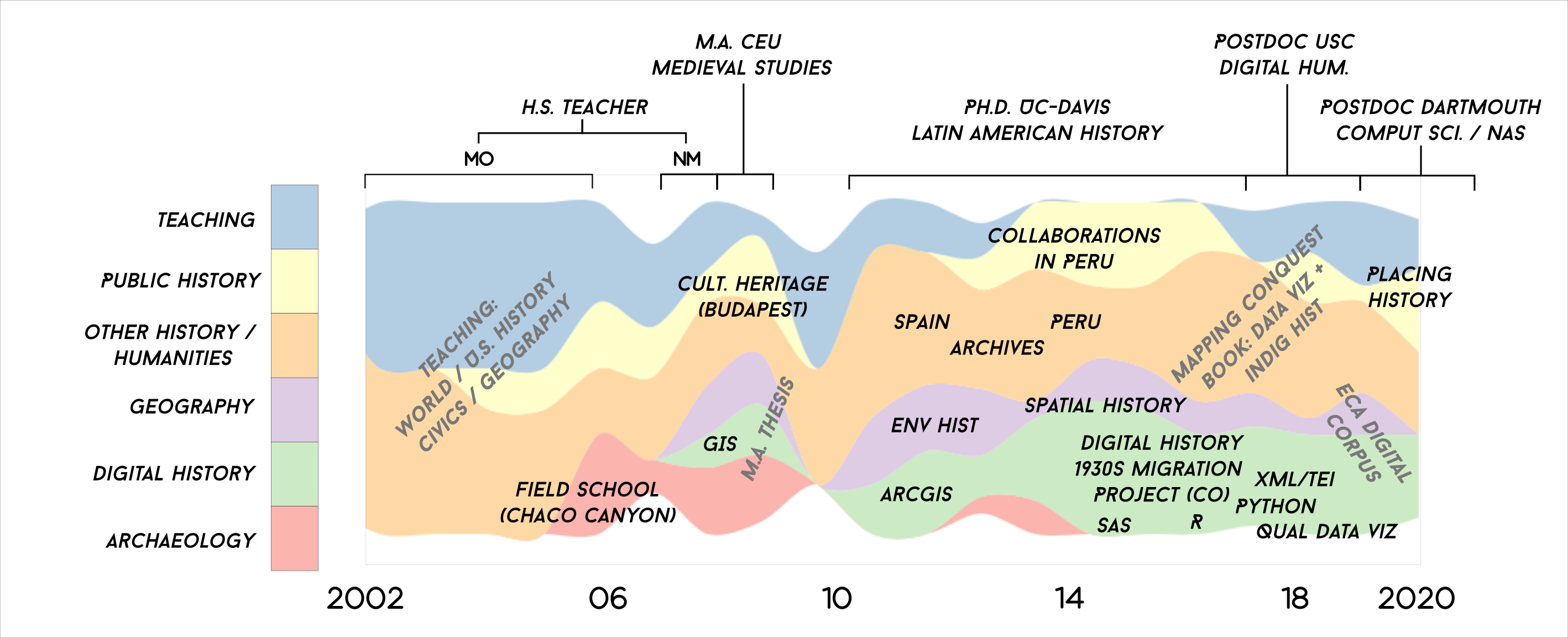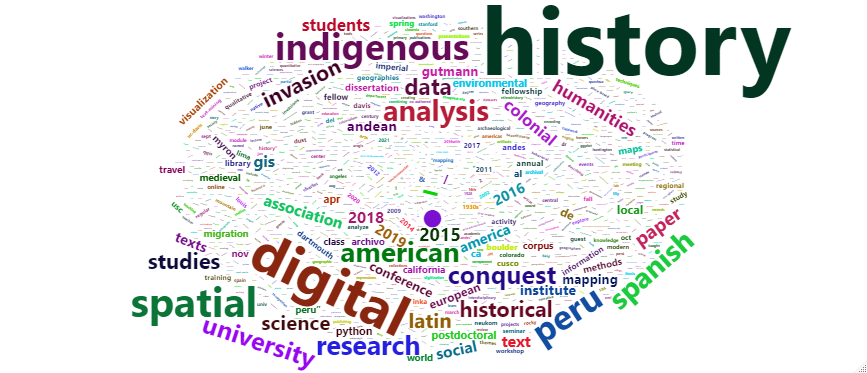My work was most recently published in the Hispanic America Historical Review, (May 2020): "Beyond Cajamarca: A Spatial Narrative Reimagining of the Encounter in Peru, 1532-1533." It explores how our view of an enormously consequential historical event changes when viewed from a distance and from different places. In a previous article, published in a leading digital humanities journal, I demonstrated the value of applying digital and spatial history approaches to early colonial conflicts. This article appeared in the International Journal of Humanities and Arts Computing (Edinburgh University Press, March 2017): "Peering beyond the Imperial Gaze: Using Digital Tools to Construct a Spatial History of Conquest." I am currently finishing a born-digital article tentatively titled "Shadowy Figures," which explores the ways data visualization can facilitate the reconstruction of history's silenced events, invisible actors, and lost geographies. I recently completed a paper for a volume comparing imperial strategies of geographical knowledge collection in Spanish America with that in China and I am working with a student research assistant at Dartmouth and a digitization company to finish the digitization phase of my Early Colonial Andes Digital Text Corpus.
This project examines what can be learned by applying a 'big data' approach to place names. The creation of large digital datasets and the tools to process and analyze these datasets have revolutionized other fields of study, such as demographic history, public health - and for textual study, corpus linguistics - to name a few.


